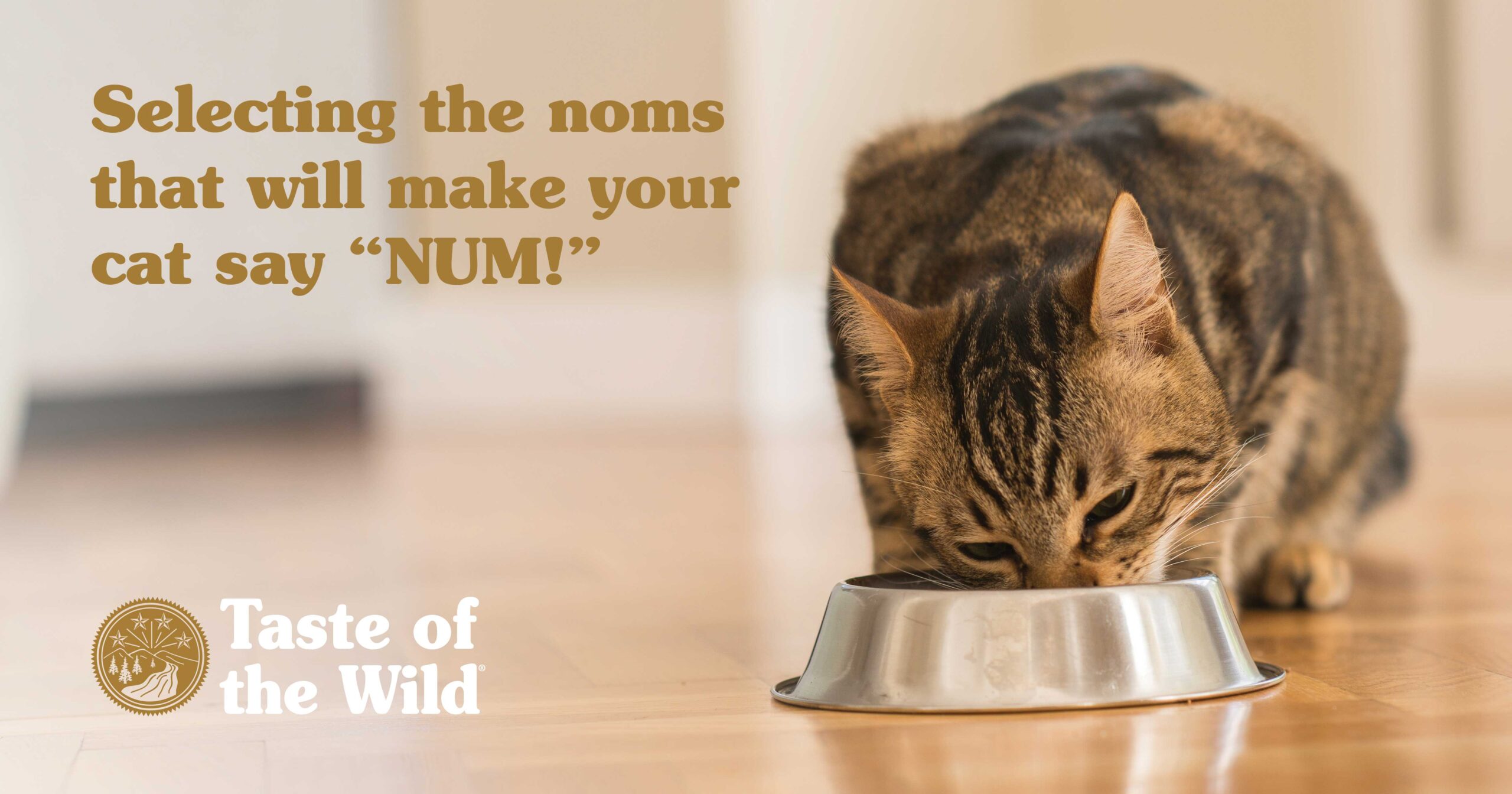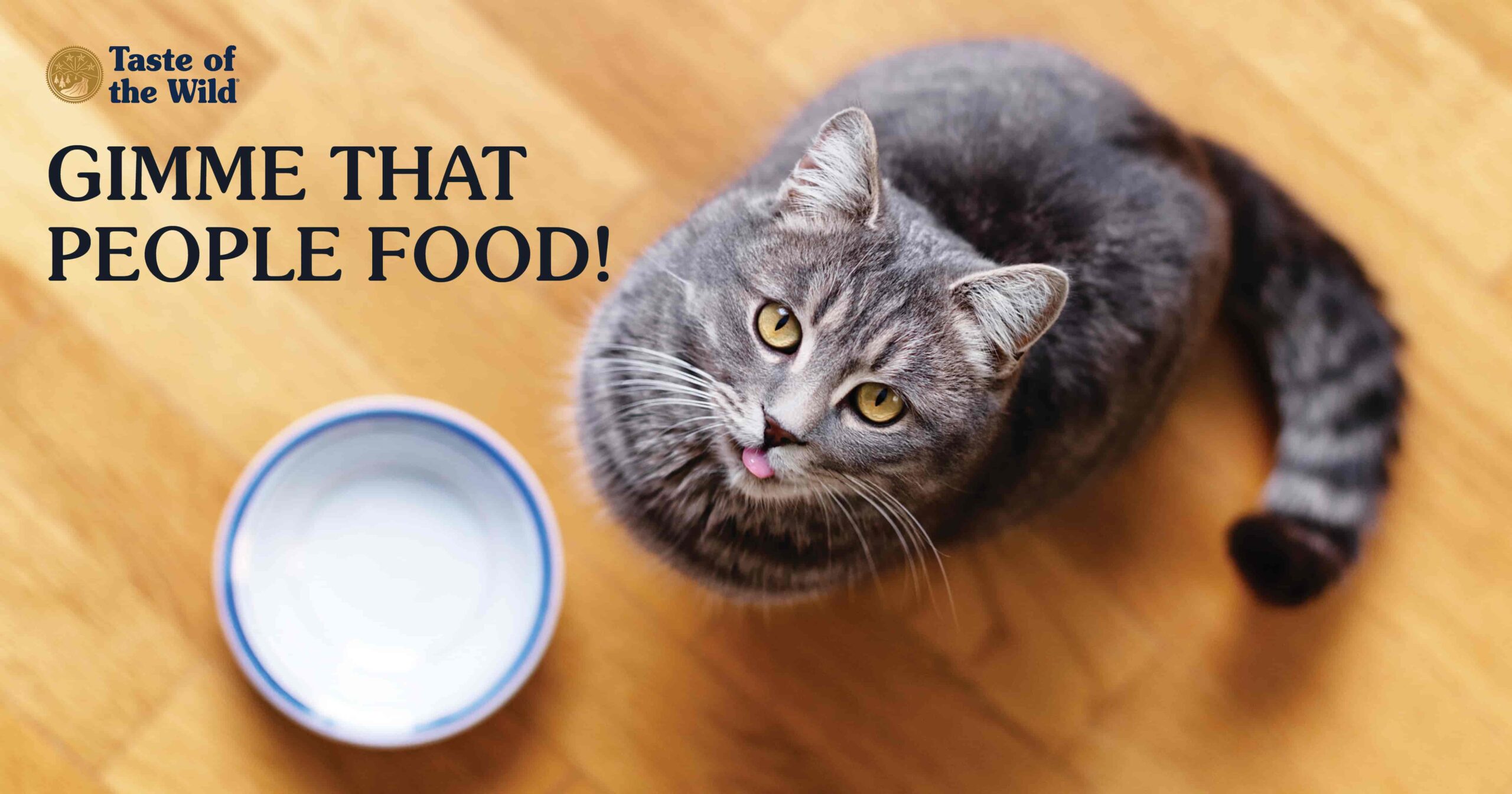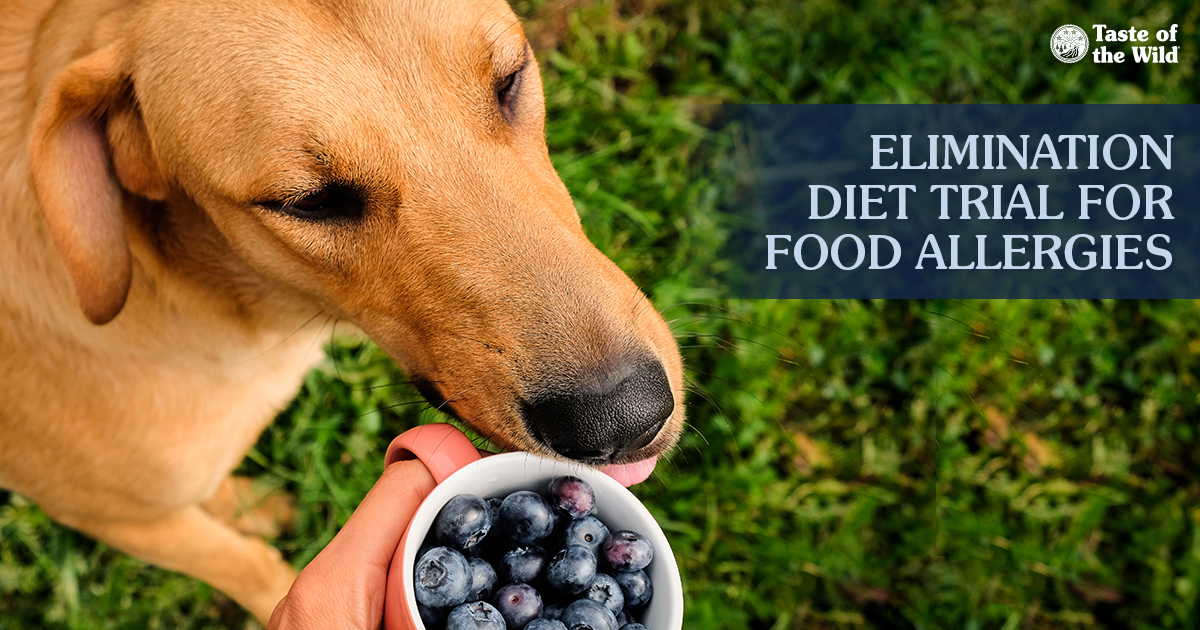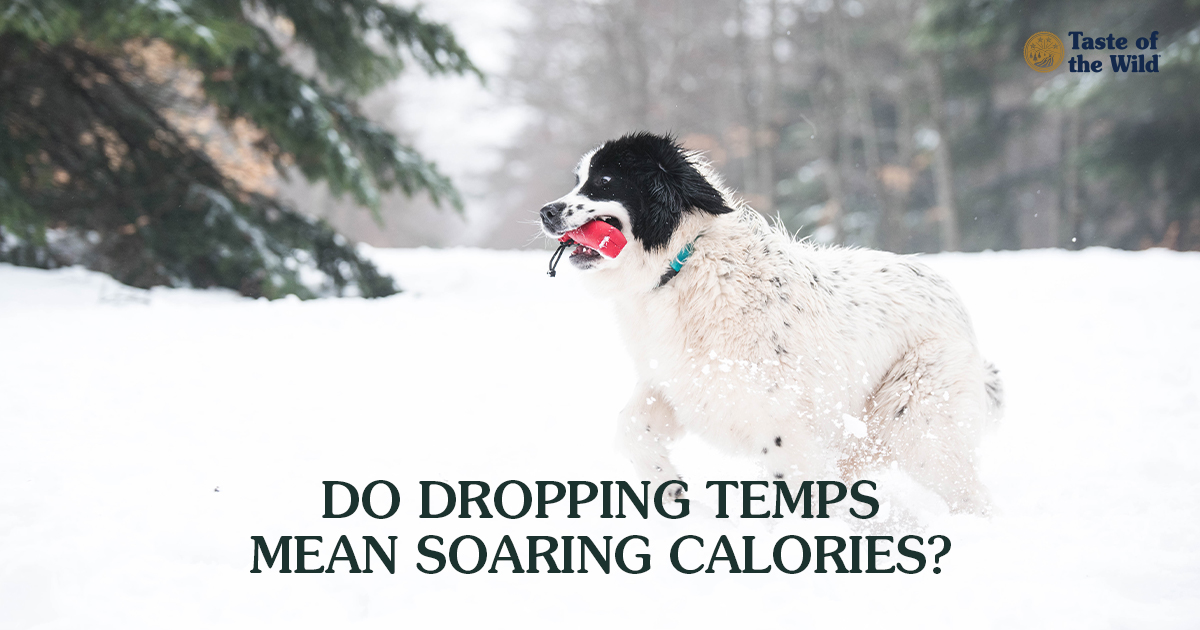Selecting the Right Food for Your Cat
Thursday, August 1, 2019 | Nutrition

You love, love, love your cat, but who has time to stand in the cat food aisle reading every label? To simplify what has become a complex procedure, here are some general things to keep in mind when choosing cat food.
It’s all about the meat. Although you may be vegetarian or vegan, it simply won’t work for your cat. Felines are obligate carnivores, meaning that they need essential nutrients and amino acids that come from dietary meat. Pet food ingredients are listed in descending order by weight. Look for foods with meat, meat byproducts or fish appearing at the top of the list. This helps ensure your cat’s getting all the carnivorous nutrients it needs.
Consider your cat’s life stage. Rambunctious kittens need more calories, proteins and fats than adult cats. Same goes for pregnant and nursing cats. Start by looking for the Association of American Feed Control Officials (AAFCO) statement on the pet food label. It should specify that the food is complete and balanced for your pet’s specific life stage, from growth (kittens) and gestation/lactation (pregnancy/nursing) to maintenance or all life stages.
Of course, a food designed for all life stages, including kittens, probably contains higher fats and calories than a maintenance diet, so feeding that to your sedentary older cat may lead to excess weight. Because these foods are complete and balanced, there should be no need for supplements, unless they’re recommended by your veterinarian.
Find your cat’s preference. Commercial cat foods are available in dry, semi-moist and canned formulations, all with pros and cons:
- Dry foods can provide an abrasive surface to help remove plaque from teeth. They won’t get crusty in the bowl if your cat prefers to nibble throughout the day. On the other hand, some dry foods may not tickle your cat’s taste buds like canned foods can.
- Semi-moist foods can be more palatable than dry foods, but they can dry out and become rancid if left in the bowl too long.
- Canned foods are generally the most palatable diets to cats — and the most expensive. Unused food needs to be refrigerated to prevent spoilage.
Water, water, everywhere. Cats need plenty of fresh, clean water. And those with kidney and urinary tract issues tend to fare better with more water circulating through their systems. That could impact the type of food you choose, given that dry food generally contains 6 to 10 percent water, moist food is made of about 35 percent water and canned wins the prize with 75 percent water. For cats who prefer dry food but need to increase their water intake, pet water fountains are often useful. Additionally, your veterinarian can provide tips for transitioning from kibble to food with more moisture.
Treat a medical condition. Does your cat have diabetes, kidney disease, urinary tract stones or some other health problem? Your veterinarian may recommend a prescription diet. In these cases, the nutrients are balanced to help stabilize blood sugar, slow the progression of disease, manage urine pH or some other therapeutic goal. The key is to feed your cat only the prescription food and no treats unless they are approved by your veterinarian.
Set the mood. No matter how scrumptious the cat food is, your purr monster may not touch it if the food bowl is in a noisy, high-traffic area or too close to the litter box. Find a quiet, private area where your cat can focus on pleasing his or her palate in peace.
Cats can be finicky creatures, and the most important thing is to find food that meets their dietary needs. But if you can find that sweet spot between preference and necessity, cat and owner alike will purr.
The information in this blog has been developed with our veterinarian and is designed to help educate pet parents. If you have questions or concerns about your pet’s health or nutrition, please talk with your veterinarian.




